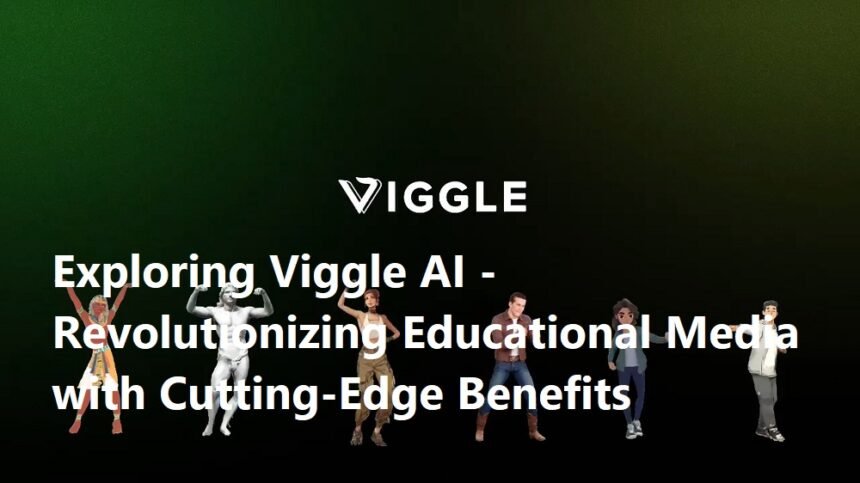In an era where technology reshapes how we learn, artificial intelligence (AI) tools are emerging as game-changers in education. Among these innovations, Viggle AI has recently captured attention for its unique ability to enhance media-based learning experiences. Designed to bridge gaps in engagement, accessibility, and personalization, Viggle AI is rapidly becoming a go-to resource for educators, students, and institutions. Here’s a closer look at its features and the transformative benefits it offers.
What Is Viggle AI?
Viggle AI is an advanced AI-powered platform tailored to optimize educational content creation and delivery. By leveraging machine learning, natural language processing (NLP), and interactive media tools, it transforms static lessons into dynamic, immersive experiences. Unlike traditional e-learning software, Viggle AI focuses on adaptive learning, real-time feedback, and multimedia integration, making it ideal for K-12 schools, universities, and corporate training programs.
Key Features of Viggle AI
- Smart Content Generation
Viggle AI automates the creation of lesson plans, quizzes, and visual aids. Educators input a topic, and the platform generates tailored materials—including videos, infographics, and interactive simulations—saving hours of manual preparation. - Real-Time Language Translation
With support for over 50 languages, Viggle AI breaks down language barriers. Students worldwide can access lessons in their native tongue, while educators receive translated assignments and feedback. - Interactive Video Lessons
The platform converts standard videos into interactive sessions. Viewers can click on-screen elements to explore 3D models, pause to answer embedded quizzes, or adjust playback speed based on their comprehension level. - Adaptive Learning Paths
Viggle AI analyzes student performance data to customize learning journeys. Struggling learners receive additional resources, while advanced students are challenged with higher-level content. - AI Tutoring Assistants
Virtual tutors powered by Viggle AI provide 24/7 support, answering questions via chat and offering step-by-step guidance for complex problems.
Benefits of Viggle AI for Educational Media
- Enhanced Student Engagement
Traditional lectures often fail to captivate digitally native learners. Viggle AI addresses this by integrating gamification and multimedia. For example, history lessons can include AI-generated reenactments of historical events, while science classes feature virtual lab experiments. Such interactivity boosts participation and retention rates.
- Personalized Learning at Scale
Every student learns differently. Viggle AI’s adaptive algorithms identify individual strengths and weaknesses, adjusting content delivery to suit diverse learning styles. A visual learner might receive more video content, whereas an auditory learner gets podcast-style summaries. This personalization ensures no student is left behind.
- Cost-Effective Resource Development
Creating high-quality educational media—such as animations or VR simulations—is typically time-consuming and expensive. Viggle AI slashes costs by automating production. Schools with limited budgets can now access professional-grade materials, democratizing access to innovative education tools.
- Bridging the Accessibility Gap
For students with disabilities, Viggle AI offers features like automatic closed captioning, audio descriptions, and compatibility with screen readers. Its language translation tools also support non-native speakers and remote learners in underserved regions.
- Data-Driven Insights for Educators
Teachers gain access to dashboards tracking student progress, engagement metrics, and knowledge gaps. These insights allow educators to refine lesson plans, allocate resources effectively, and provide targeted interventions.
- Future-Proofing Skills
Viggle AI incorporates emerging trends like augmented reality (AR) and coding modules into curricula. By exposing students to cutting-edge technologies early, it prepares them for careers in tech-driven industries.
Case Study: Viggle AI in Action
A high school in California piloted Viggle AI for its biology classes. Teachers used the platform to create virtual dissections and 3D models of ecosystems. Students engaged with the content at their own pace, while AI tutors assisted with homework. Over six months, the school reported a 22% increase in test scores and a 35% reduction in dropout rates among struggling learners.
Challenges and Considerations
While Viggle AI offers immense potential, its adoption requires careful planning:
- Digital Divide: Schools lacking reliable internet or devices may struggle to implement the tool fully.
- Data Privacy: Storing student data on AI platforms necessitates robust cybersecurity measures.
- Teacher Training: Educators need professional development to maximize Viggle AI’s capabilities.
The Future of Viggle AI
Developers are already expanding Viggle AI’s features. Upcoming updates include emotion recognition (to gauge student frustration or boredom) and collaborative virtual classrooms where AI moderates group discussions. As generative AI evolves, Viggle could soon craft entire custom textbooks in minutes.
Conclusion
Viggle AI represents a paradigm shift in educational media, merging technology with pedagogy to create inclusive, engaging, and effective learning environments. While challenges remain, its benefits—personalization, accessibility, and scalability—position it as a critical tool for modern education. As schools and institutions embrace AI, platforms like Viggle will play a pivotal role in shaping a future where every learner thrives.











